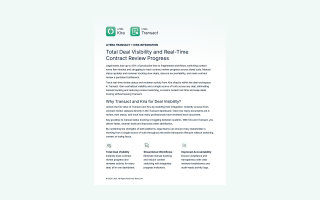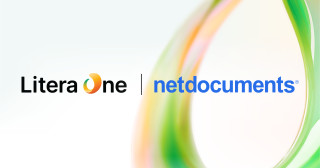Webinar on the “What, How, and Why” of the New Litera Create Platform
Three Litera executives presented a webinar that introduced the new Litera Create offering, and its transformation into a platform for document creation that’s much more powerful and flexible than previous products in this class. The webinar, “A Document Automation Platform for Quicker First Drafts, Quicker Access to Content, and Quicker Templates,” provides viewers with a practical overview of what’s new about Create; the steps involved in implementing it; and the advantages of Create’s shift from legacy templating and macro packages into a true platform.
Litera Evangelist Sherry Kappel moderated the webinar, which featured insights from three Litera Create leaders:
- Matt Miller VP, Drafting Products
- Cinda Voutselas, Senior Manager Solutions Engineering
- Leif Granberg, Lead Solutions Engineer
The What
Matt Miller kicked things off with a review of how Create came about, including its incorporation of Innova and Forte, two applications that Litera acquired in 2017, and Clause Companion, a Litera product for managing clauses. Create pulled together the best features of these separate applications. The goal was better integration of the capabilities of these applications into a platform that also provides integrations with other third-party applications used by customers.
The benefits of Create are all centered around streamlining the process of drafting, including the incorporation of data from multiple sources. Miller described the three main benefits as:
- Consolidation: The consolidation of what had been three separate applications.
- Modernization: The move to a new service architecture that maximizes flexibility, speed, and reusability.
- Simplification: Streamlining the tool to focus on 90% of the legacy product features that users engaged with the most.
The How
Cinda Voutselas, in describing the process of implementing Litera Create in a firm, emphasized the platform aspect of Create. When users roll out Create, there are really three main components:
- Create Web Platform (CWP): The set of services and a database that does all the underlying work.
- Create Desktop Application (CDA): The first of what will become a new set of applications to run on the platform – some of which Litera will build, but some of which could be user-created applications, or user interfaces or connectors to other systems a customer uses.
- Numbering, TOC, & DocID (NTD): A package bundled with Create that helps manage firm specific numbering, tables of contents and document IDs.
Voutselas described the steps involved in rolling out Litera Create in a firm, the teams and resources that Litera brings to bear on all the steps needed to prepare, install, and configure Create, as well as support for the training, communications, and change management involved in an installation and the path to adoption. Migration of templates and data from existing systems are a big part of an installation, and Litera has the people and processes that support customers in the transition to the new system.
The Why
Leif Granberg’s portion of the webinar focused on the architecture of the new Create platform, which underscored the benefits of having extensible, platform-based web services running underneath the applications running on it.
He described an architecture comprised of three main components: The user desktop environment, where users create their documents and execute their workflows; the platform (CWP) where most of the processing power resides, and the connections to content and data sources such as clause banks and client matter databases. One benefit of this architecture is that it frees the user interface from the desktop environment and enables them to access the Create platform and applications from across a wide variety of devices and interfaces. It also makes it easy to make updates to the underlying platform without having to update multiple user desktop installations.
Sherry Kappel reminded the audience that one of the key strengths of the platform approach is that more people than just the application administrators can become content owners and document designers. End users will be able to create depositories of their best content and their own templates, and share with others.
Additional Resources
The webinar presented a valuable, in-depth overview of the “what, how and why” of Litera Create, and anyone looking at enhancing their drafting processes should have a look. But the webinar also includes an overview of a robust set of additional documents, guides and videos that will enhance and streamline the transition to the Litera Create platform. Watch the on-demand webinar here.



